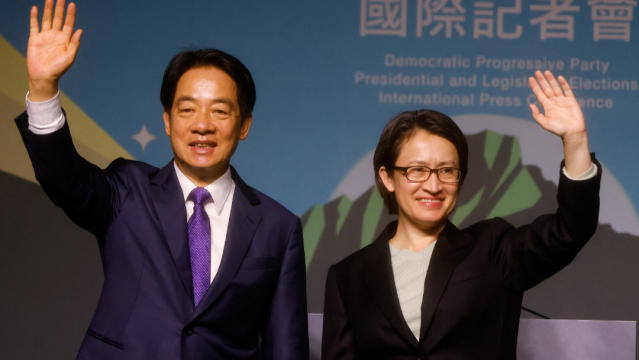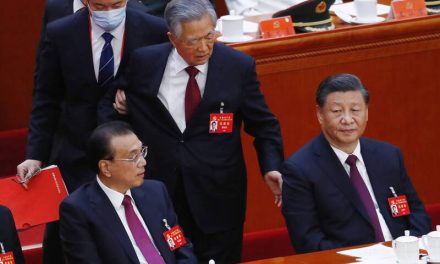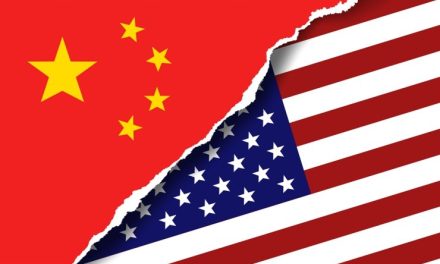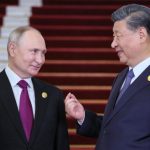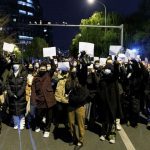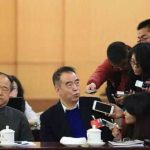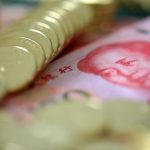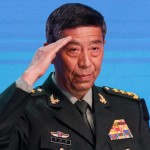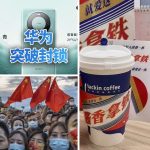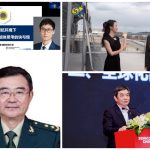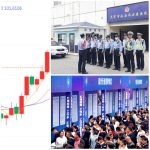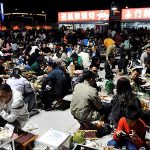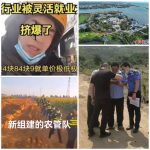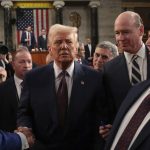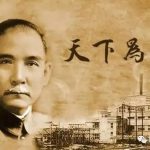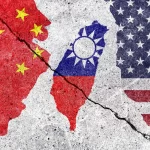By Bai Din
At the time this article is being published, Taiwan’s presidential election has concluded. For Taiwan, the election results are important, but it is particularly important to review the CCP’s infiltration and influence on it, so as to identify and eliminate its interference in future Taiwanese politics.
In his New Year’s address to the nation on December 31, Chinese Communist Party Chair Xi Jinping asserted that China and Taiwan will definitely be reunited. What Xi Jinping calls “unification” in the current context is a euphemism for “unification by force.” This is because China, under the rule of the CCP, will not give up its hostile stance towards democracy and freedom in the foreseeable future, and Taiwan will not give up its freedom and surrender to the CCP without fierce resistance. In the context of current cross-strait relations, both Taiwan and China understand the true meaning of the word “reunification.”
Since Taiwan held its first direct presidential election in 1996, China has been trying to steer Taiwan’s election results toward the goal of unification with China. As the 2024 general election approached, China’s most naked campaign-interference methods included pressuring Taiwanese businessmen in the mainland to support KMT candidates friendly to the CCP, using the Democratic Progressive Party’s “Taiwan First” slogan and its opposition to the 1992 consensus, and mobilizations of Taiwan’s residents to vote against the ruling Democratic Progressive Party to avoid triggering the CCP’s use of force against Taiwan.
Meanwhile, on its side of the Taiwan Straits, Taiwanese President Tsai Ing-wen called on China to help maintain regional peace in her 2024 New Year’s address.
Tsai Ing-wen’s appeal to China is tantamount to playing the piano to a bull. Indeed, history has proven that maintaining peace, whether at home or outside China, is rarely a priority for the CCP, with examples extending far beyond China’s current bullying of the Philippines and Vietnam in the South China Sea.
First, consider the CCP’s performance on the international stage.
In 1950, less than a year after the founding of the People’s Republic of China in October 1949, China and the former Soviet Union supported North Korea’s invasion of South Korea, which was recognized by the United Nations as an independent country. The invasion led to the three-year Korean War, the bloodiest military conflict since World War II, which killed 2-3 million civilians.
In the 1960s, after receiving decades of ideological, financial and technical assistance from the Soviet Union, the powerful CCP decided to challenge the leadership of its generous sponsor and tried to establish itself as the leader of the international communist movement. The CCP attacked the Soviet Union ideologically and provoked border conflicts militarily. China’s actions brought the two communist powers to the brink of nuclear conflict.
Ten years later, in 1979, it fell to Vietnam to overthrow the Khmer Rouge, the extremist terrorist regime in Cambodia supported by the CCP, and China then launched a large-scale invasion of northern Vietnam in the name of “self-defense.” To this day, the shadow of this war still hangs over China-Vietnam relations.
Only the major conflicts are listed above. Some smaller conflicts are not included but can be explored further by interested readers. These small but significant conflicts include the annexation of Tibet in the 1950s, the Indo-China War in 1962 and the three Taiwan Straits crises (1954-55; 1958; 1995-96).
Second, the China under the CCP’s control has no need for peace.
Shortly after the founding of the People’s Republic of China in 1949, China launched a series of brutal campaigns across the country, each targeting specific groups of people. Movements in the 1950s included campaigns against the national bourgeoisie, the “bureaucracy,” landlords and rich peasants, and suppression of counterrevolutionaries. In the 1960s, they opposed older intellectuals and anyone with any relation to traditional Chinese culture. In the 1970s, they campaigned against local officials, and anyone who questioned Mao Zedong’s personality cult. From the 1980s to the present, there have been campaigns against the very ideas of freedom. These movements have resulted in tens of millions of peacetime deaths in China.
The last of these, the anti-liberalism movement that began in the 1980s, is the most ironic, because in the eyes of overseas observers, this was the most open period in China. But in fact, the extent of the CCP’s hatred of freedom during this period was no less than at any time since 1949.
People will certainly ask, what have the CCP and China gained from these ongoing international conflicts and domestic turmoil? The answer is simple: almost nothing.
The Korean War subjected China to three decades of international isolation until the United States restored diplomatic relations with China. The conflict with the Soviet Union deprived China of its only source of high technology and led to decades of economic hardship. The invasion of Vietnam resulted in 26,000 Chinese families permanently losing their husbands, sons and fathers, and 37,000 families with members disabled by the war. Likewise, the four decades of civil unrest that preceded reform and opening up brought China to the brink of economic collapse, in the CCP’s own language.
But each of these conflicts and upheavals has been touted as a huge success by the Chinese government, and the Chinese people even now actually (or at least ostensibly) believe these official narratives. The CCP points to its economic success in the past 30 years as proof of its righteousness. Outside of China, half of the world’s countries agree with the CCP’s position because they value economic interests over adhering to the principles of freedom.
From the above brief recap, we can clearly see that “maintaining peace” is not only not among China’s priorities, but actually often runs contrary to China’s domestic and international behavior.
Taiwan has extended an olive branch to China many times in the past, but was only rewarded by China launching missiles into the Taiwan Straits, especially during Taiwanese elections. This time, Taiwanese President Tsai Ing-wen issued a “peace appeal” to China ahead of Taiwan’s upcoming presidential election, but the results were the same.
The CCP’s efforts to interfere in Taiwan’s elections are not surprising, as “unifying Taiwan” has been the CCP’s political and nationalist goal since it came to power in 1949. China holds the sweet carrot of “peaceful reunification” in one hand and wields the stick of missiles in the other. These old tricks by the CCP have never changed.
Now, the Taiwan election has ended. Moving forward, no matter the distribution of power, the Taiwan government should immediately begin to take effective countermeasures to resolve the CCP’s interference in Taiwan’s politics. In order to thwart China’s “peaceful reunification” offensive, Taiwan not only needs to respond to the CCP’s intervention, but also needs to be one or two steps ahead of the party.
First, and most importantly, the Taiwan government must provide those Taiwanese businessmen in mainland China with accurate and up-to-date information on China’s economy and politics, and provide them with assistance in divesting from China. As foreign direct investment begins to pour out of China, Taiwanese companies still cling to past illusions of making fortunes in China, at least partly because of the lag in information provided by their own government. The less dependent Taiwanese businessmen are on the Chinese market, the weaker China’s influence on Taiwan’s domestic policies through Taiwan’s business community will be.
Second, Taiwan should adopt stricter laws to regulate the sources of political donations and the behavior of foreign agents. Before Taiwan’s democratization in the 1980s, the Kuomintang was the sworn enemy of the CCP. However, since Taiwan’s native Democratic Progressive Party became a main political force in Taiwan, the Kuomintang has evolved into an agent of the CCP, helping it implement its One China agenda. The funding sources of all political parties (such as the KMT), donors’ links to China, and the party’s stance on China should be clearly disclosed to the Taiwanese public.
Third, the Taiwanese government should clearly explain to the Taiwanese people what “unification with China” would mean to them and the freedom and prosperity they enjoy. The tragedy of the people’s loss of autonomy after Tibet and Hong Kong were taken over by China should be presented to the public in a just-the-facts way, rather than via China’s sugar-coated propaganda.
Finally, the Taiwanese government should show the Taiwanese people the real-life conditions that ordinary Chinese people have experienced, and continue to experience, under CCP rule. The latest data shows that 1 billion Chinese people have a monthly income of less than 2,000 yuan (US$300), and 600 million of them have a monthly income of less than 1,000 yuan (US$150).
Through the above countermeasures, the Taiwanese people will be more able to resist the temptation of China’s “peaceful reunification” carrot, and more willing to stand up against China’s missile stick.
China has stepped up its offensive to “unify Taiwan”” through military threats and mobilization of war-hating segments of Taiwanese society. In response, in addition to strengthening its military-defense capabilities, the Taiwanese government must also develop new strategies to deal with China’s non-military offensives, because these offensives are eroding the Taiwanese public’s sense of identity and determination to defend freedom.
This piece was translated from Yibao Chinese. If republished, please be sure to add the source and link https://www.yibao.net/?p=247708&preview=true before the text when reposting.
The views of the author do not necessarily represent those of this journal.

